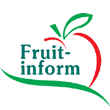Table grape acreage reduced 30% during 10 years in European Union
A huge number of various grape varieties is produced in the EU; they are differentiated by the designation: for wine production, table grape, grape for raisin production. The acreage of EU vineyards is 3.5 mln. ha. Around 95% of the grown grape is used for wine production, around 4% are table grapes, and about 1% is used for raisin production, according to FAS USDA survey.
European Union is the second largest producer and consumer of table grape (yielding to China). The largest producers of table grape are Italy (70% of the total production), Spain (15%), and Greece (7%). As grape export from the EU remains insignificant, the Union is the net importer of table grape on the global market. Turkey is the third largest table grape producer in the world. If this country joins the EU, the Union will become the largest producer of table grape in the world.
The table grape cultivation areas reduced 30% during 10 years in the EU, 1993 till 2003. The reasons are poor harvests, high cost of the resources, complicated export. At the same time, the improved technologies let the producers increase 20% the harvest in the rest of vineyards. One the major problems of the EU viniculture is the so-called minifundizm, or, in other words, small sized farms which do not let apply effective production technologies. The average size of the Greek farm is 0.5 ha, Sicilian farm - 3.4 ha, Valencia farm - around 1.5 ha.
Irrigation is a very important element of the grape production technology. The production is concentrated in the southern regions with hot and dry climate, so the vineyards without irrigation provide only one third of the yield comparing to the irrigated areas. The non-irrigated vineyards constitute around 20% of the acreage in Italy. The application of drip irrigation is becoming more popular because of the high water cost.
The high cost of manual labor (as known, grape production is labor intensive) makes the producers face the necessity to mechanize the production; but no significant mechanization is possible to achieve because of the technical complications. Low profitability of this business leads to the fact that the average age of the farmer - grape producer is 50-55 years. Young people do not eager to master this profession.
The researches see the opportunity to develop the table grape sector in the EU by means of stimulation of grape consumption in the EU, development of new markets, in particular Russia, more effective work of the cooperatives, development of the research centers able to select new varieties.
 Information for fruit and vegetables business in CIS
Information for fruit and vegetables business in CIS